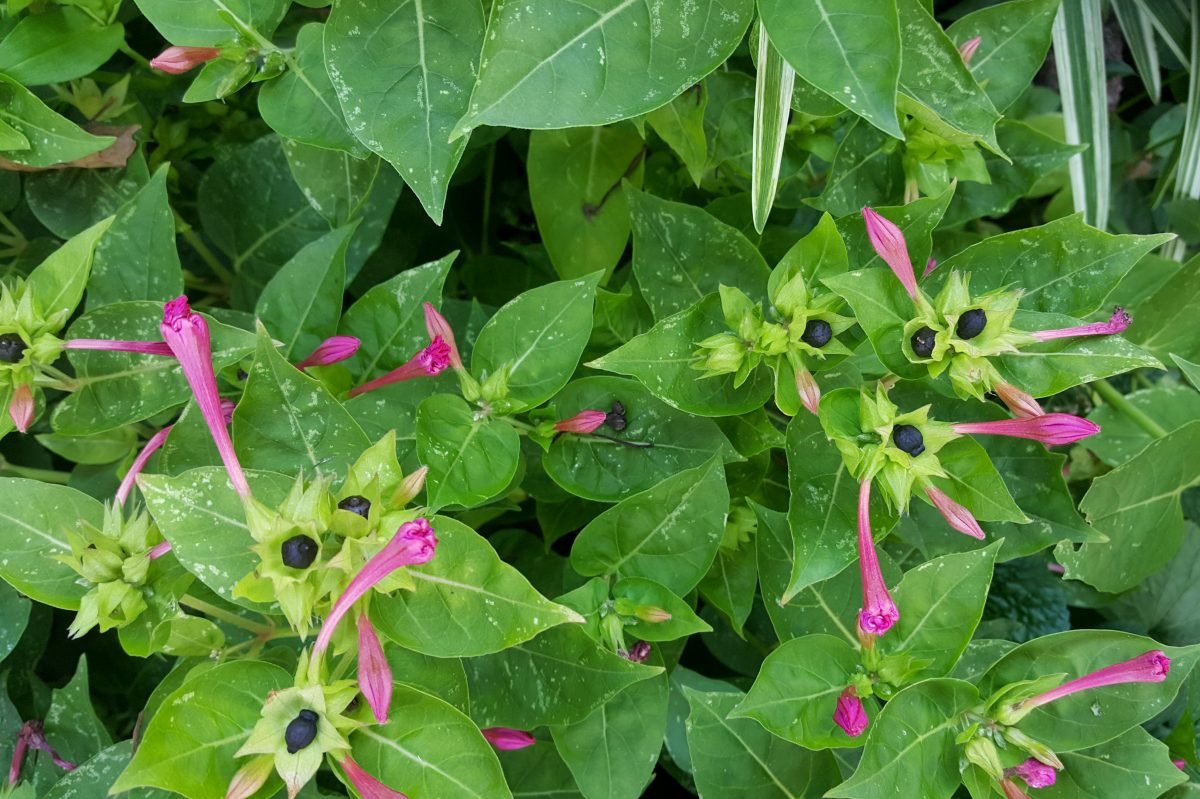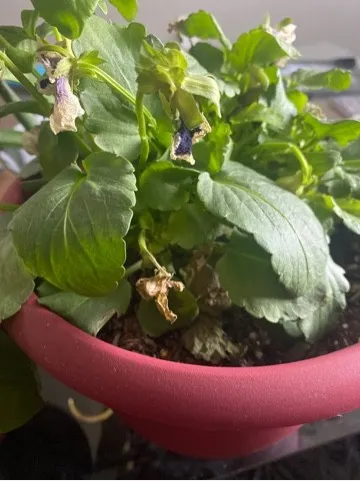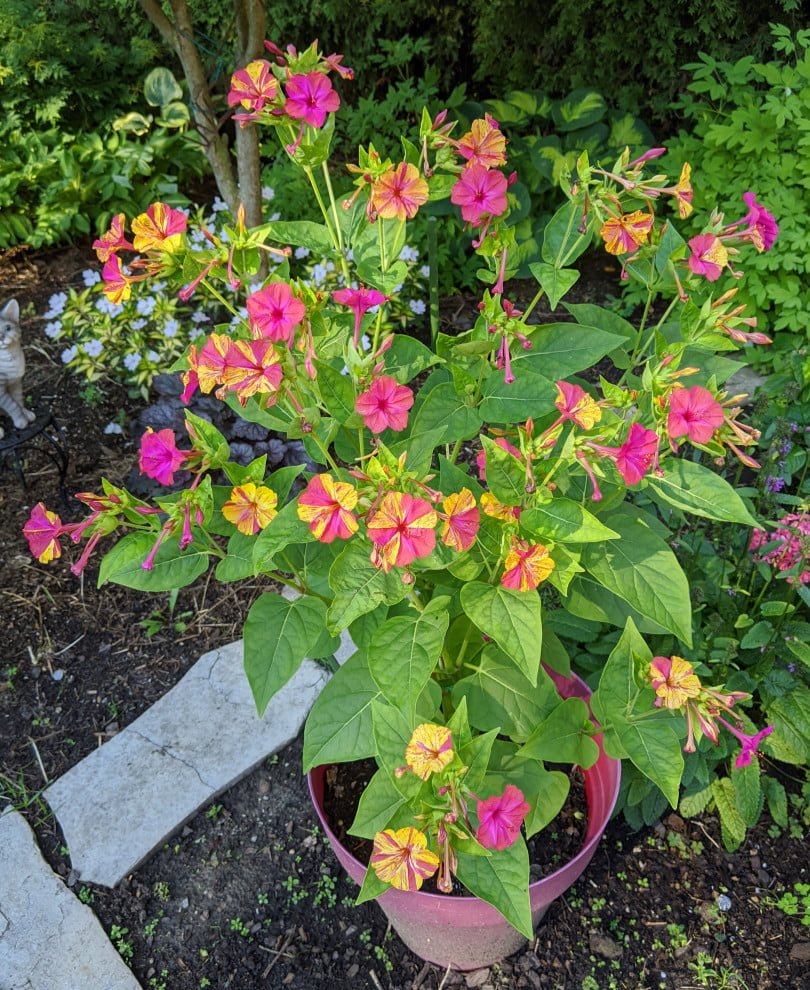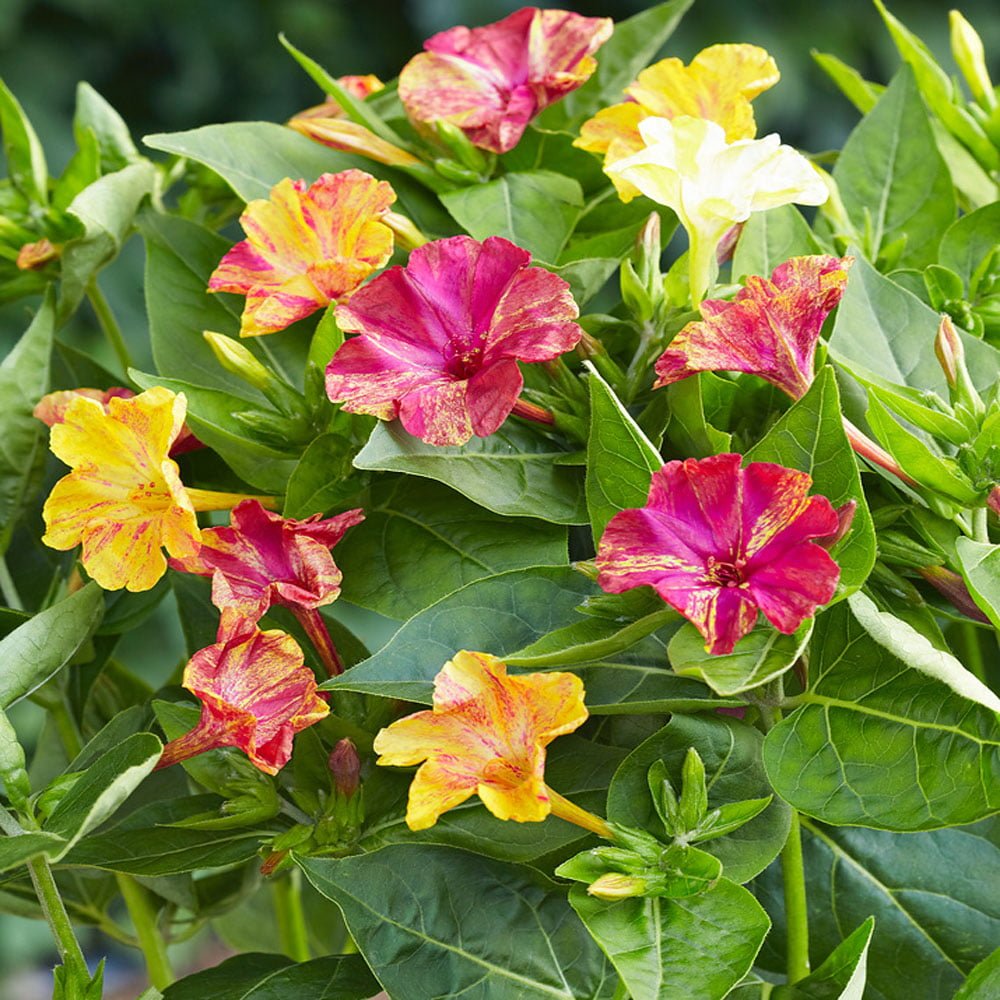Learn how to grow and maintain Four O’Clock flowers with our comprehensive guide. Discover essential tips for planting, caring for and ensuring vibrant blooms of these charming evening flowers in your garden.
The four o’clock flower (Mirabilis jalapa) is a delightful addition to any garden. With their vibrant colors, delicate fragrances and ability to bloom in the late afternoon, these cheerful blossoms earn their popular name. Whether you’re a seasoned green thumb or just starting your gardening journey, learning the proper care, maintenance and planting tips will ensure your four o’clocks thrive.
Here’s an information chart for Four O’Clock Flowers, scientifically known as Mirabilis jalapa:
| Attribute | Details |
|---|---|
| Botanical Name | Mirabilis jalapa |
| Common Name | Four O’Clock, Marvel of Peru |
| Plant Family | Nyctaginaceae |
| Hardiness Zone | USDA zones 7-11 |
| Sun Exposure | Full sun to partial shade |
| Soil Type | Well-drained, fertile soil |
| Watering | Moderate; drought-tolerant once established |
| Growth Habit | Herbaceous perennial |
| Height/Spread | 2-3 feet tall / 1-2 feet wide |
| Special Features | Fragrant flowers, blooms in late afternoon, diverse colors, attracts pollinators |
What are Four O’Clock Flowers?

Native to the tropical regions of America, four o’clock flowers are tender perennials commonly grown as annuals. They belong to the Nyctaginaceae family and are closely related to bougainvilleas. These charming bloomers earned their name because their trumpet-shaped flowers unfurl in the late afternoon, around 4 pm, releasing a sweet fragrance that intensifies as the sun dips lower.
While the flowers typically last only a single day, new blossoms will continuously replace the spent ones, providing a constant display throughout the summer months. Available in a rainbow of colors like red, yellow, pink and white, solid or striped variants add visual interest to gardens.
Planting Four O’Clock Seeds

Four o’clocks are incredibly easy to grow from seed and you can direct sow them once the soil has warmed to around 65°F (18°C). Here are some tips for sowing four o’clock seeds:
- Choose a Sunny Spot: These sun-lovers thrive in full sun, requiring at least 6 hours of direct sunlight per day. Pick a spot that gets ample light.
- Prepare the Soil: Four o’clocks appreciate well-draining, nutrient-rich soil. Amend your planting area with compost or aged manure to improve fertility and drainage.
- Plant Deeply: Sow the seeds about 1 inch deep and 6-12 inches apart. Planting deeply helps establish a strong root system.
- Water Regularly: Keep the soil moist until the seeds germinate, which usually takes 7-14 days. Once established, water when the top inch of soil is dry.
You can also start four o’clock seeds indoors 4-6 weeks before your last expected frost date. Just be sure to harden off the seedlings gradually before transplanting them outdoors after danger of frost has passed.
Caring for Four O’Clock Plants

Four o’clocks are wonderfully low-maintenance, but providing proper care will maximize their brilliant blooms. Follow these easy tips:
- Water Deeply: Established plants need about 1 inch of water per week from rain or irrigation. Avoid letting the soil dry out completely.
- Apply Mulch: A 2-3 inch layer of organic mulch like bark chips or leaves will retain moisture and suppress weeds.
- Feed Occasionally: While not heavy feeders, scratching in a balanced fertilizer once or twice during the growing season will promote lush growth.
- Deadhead Blooms: Remove spent flowers to encourage more buds and prolong the blooming period.
- Stake Tall Varieties: Some cultivars can reach 3 feet tall. Provide support with stakes or cages if needed.
With just basic care, your four o’clock plants will reward you with their showy blooms until the first hard frost.
Growing Four O’Clocks in Containers

If you have limited garden space, four o’clocks make fantastic container plants. Choose a pot at least 12 inches wide and deep with drainage holes. A good quality potting mix provides the ideal growing medium. Water whenever the top few inches of soil become dry and feed with a diluted liquid fertilizer every few weeks. Smaller containers may need watering daily in hot weather. Four o’clocks grow beautifully in window boxes, hanging baskets or classic pots on a sunny patio or deck.
Pruning and Overwintering

As summer winds down, your four o’clock’s blooms will gradually diminish. You can prune the plants back by one-third to one-half their height after flowering ceases. This will encourage a tidy, bushier form and remove any unsightly, dying foliage.
In frost-free climates (Zones 8-11), you can leave your four o’clocks in the ground year-round by cutting them back to about 6 inches tall. Add a thick 4-inch mulch layer over the roots for winter protection. In cooler regions, you’ll need to dig up the tuberous roots and overwinter them in a cool, dry place like an unheated basement or garage. Replant them in spring after all danger of frost has passed.
Propagating Four O’Clock Plants

Not only do these flowers self-sow readily from dropped seeds, but you can easily propagate four o’clocks through:
- Division: Every few years, carefully dig up the tuberous roots and split them apart, replanting the divisions.
- Stem Cuttings: In early summer, take 4-6 inch stem cuttings and root them in moist potting mix.
- Tubers: The swollen underground tubers can be dug and divided during dormancy.
With their ability to spread by seed, four o’clocks can become aggressive self-sowers. Remove unwanted seedlings promptly in spring.
Common Pests and Diseases

Four o’clocks generally have good resistance to pests and diseases, but problems can sometimes occur:
- Aphids: These sap-sucking insects can spread viral diseases. Use a strong blast of water or insecticidal soap to remove them.
- Spider Mites: Hot, dry conditions favor these tiny spider-like creatures. Mites cause stippled, bronzed foliage. Spray plants with water or insecticidal oil.
- Root Rot: Overly wet, poorly draining soil invites this fungal disease. Improve drainage and allow soil to dry slightly between waterings.
- Rust: Orange, powdery spots signal this fungal infection. Rust is mainly just unsightly – remove affected leaves and improve air circulation.
Providing the right growing conditions and promptly addressing any issues will keep four o’clock plants vigorous.
Landscaping with Four O’Clocks

With their kaleidoscope of colors and bushy, upright habit, four o’clocks enliven gardens in many ways:
- Annual Beds: Mass the striking blooms in sunny annual beds and borders for bold color.
- Cutting Gardens: The long stems and light fragrance make four o’clocks excellent cut flowers.
- Containers: The compact varieties work wonderfully in patio containers.
- Hedges: The densely branched plants can form a natural flowering hedge when planted closely together.
- Cottage Gardens: Four o’clocks complement other old-fashioned blooms in an informal, romantic cottage-style garden.
With their low-maintenance requirements, resistance to pests/diseases and ability to self-sow, these vibrant bloomers add effortless color year after year.
Where to Buy Four O’Clock Seeds and Plants
Ready to add the magic of four o’clocks to your landscape? You can easily find seeds and plants for sale from:
- Online Seed Suppliers: Many reputable companies sell four o’clock seeds in both traditional and unique varieties.
- Garden Centers: Check the racks at local nurseries and home improvement stores in spring for four o’clock seed packets.
- Plant Swaps/Trades: Local gardening clubs or online plant groups are great for swapping seeds and tubers with other gardeners.
- Farm/Nursery Stands: Small farms or nurseries may have four o’clock plants for sale during the spring planting season.
When buying plants instead of seeds, look for sturdy, well-developed specimens without signs of pests or diseases. With a little patience and basic care, you’ll soon be enjoying the vibrant beauty that four o’clock flowers bring to gardens.
Interesting Four O’Clock Varieties
While the classic four o’clock colors like red, yellow and pink are stunning, there are also many other eye-catching varieties to try:
- ‘Limelight’ – Soft pastel lime green blooms
- ‘Sonnet’ – Fragrant double flowers in shades of pink
- ‘Broken Colors’ – Unique striped and speckled patterns
- ‘Rainbow’ – A brilliant mix of colors on each plant
- ‘Crimson Rambler’ – Tall plants with deep red trumpet blooms
With their easy nature and diversity of forms, four o’clocks make an excellent choice for gardeners of all levels. Let the kids pick fun new varieties to grow each year!
Fun Facts About Four O’Clock Flowers
Beyond their beauty and fragrance, four o’clocks have an interesting history and array of uses:
- Native Origins: Mirabilis jalapa is native to the tropical regions of Mexico and Peru.
- Edible Flowers and Tubers: The flowers, stems, leaves and tuberous roots are all edible when cooked properly.
- Natural Dye: The colorful flower pigments can be used to make eco-friendly fabric dyes.
- Medicinal Uses: Different parts of the plant were used in traditional medicine for various ailments.
- Night-Blooming Pollinators: The evening fragrance attracts hawk moths and other night-flying pollinators.
With their exotic good looks and unexpected uses, four o’clocks add fun and intrigue to ornamental gardens.
From their easy cultivation requirements to their lavish blooms that perfume the evening air, four o’clock flowers deserve a spot in every sunny garden bed or patio planter. By following the proper planting and care tips, you can enjoy years of low-maintenance color from these delightful tropical treasures. Let their cheerful charm brighten your outdoor spaces!